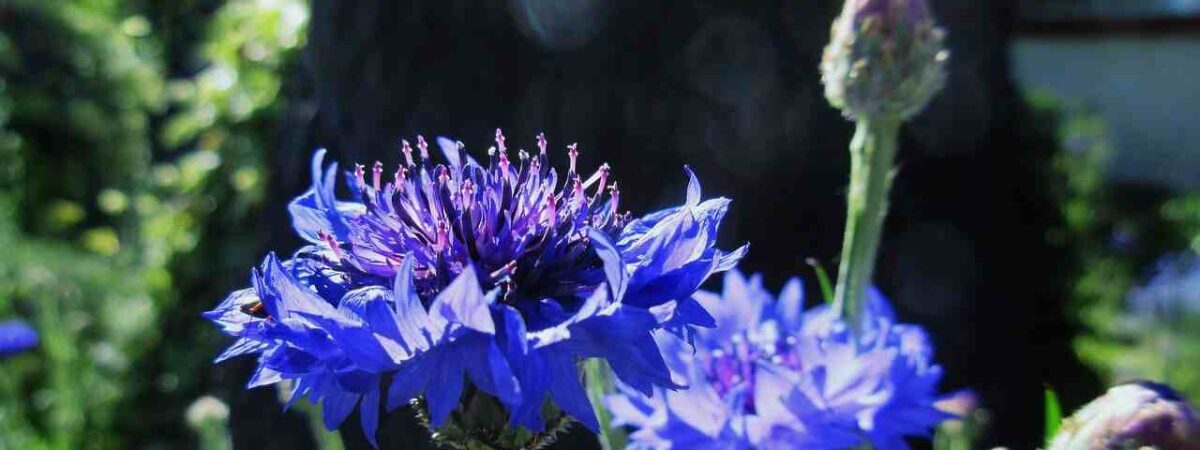Are you looking to add a pop of vibrant blue to your garden?
Then Bachelor’s Button is the perfect flower for you!
The Bachelor’s buttons are easy-to-grow annuals that are not only beautiful but also attract beneficial insects like bees and butterflies.
In this blog post, we’ll share some tips and tricks for growing and caring for Bachelor’s Button so that you can enjoy their stunning blooms all season long. So, let’s get started on this blue beauty journey!
Brief overview of Bachelor’s Button
Bachelor’s Button, scientifically known as Centaurea cyanus, is a popular annual flower that is native to Europe but is now widely cultivated in many parts of the world. This plant is known for its stunning blue flowers that can also come in shades of pink, white, and purple. The flowers bloom from early summer to early fall and can grow up to 3 feet tall.
One of the great things about Bachelor’s Button is that it is very low maintenance and can thrive in a wide range of growing conditions. It is tolerant of drought and heat, making it a great choice for gardeners who live in areas with hot summers. Additionally, the plant is attractive to beneficial insects such as bees and butterflies, making it a popular choice for pollinator gardens.
Bachelor’s Button is versatile and can be grown in various settings, from small containers to large garden beds. It’s also great for cut flowers as the blooms last a long time in the water. With proper care and maintenance, Bachelor’s Button can provide stunning blooms throughout the growing season, making it a beloved addition to any garden.
Bachelor’s Button is a beautiful and easy-to-grow flower that can add a vibrant splash of blue to any garden. By following these simple tips, you can ensure that your plants will thrive and provide you with an abundance of stunning blooms all season long.
Why should you growing and care for the Bachelor’s button?
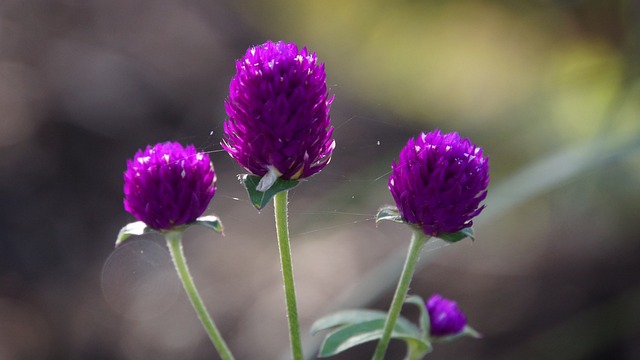
There are several reasons why growing and caring for Bachelor’s Button is important. Firstly, these beautiful flowers are not only aesthetically pleasing but also attract beneficial insects such as bees and butterflies. By providing these insects with a source of nectar, Bachelor’s Button can help support the local ecosystem and promote biodiversity in your garden.
Additionally, Bachelor’s Button is a low-maintenance plant that can thrive in a wide range of growing conditions. This makes it an ideal choice for gardeners who are new to gardening or who have limited time to devote to plant care. Furthermore, the plant’s ability to tolerate drought and heat makes it a great option for gardeners who live in areas with hot summers.
Another benefit of growing a Bachelor’s Button is that it is versatile and can be grown in a variety of settings. It can be planted in small containers or large garden beds, making it a great choice for gardeners with different space constraints.
Moreover, Bachelor’s Button is also great for cut flowers, as the blooms can last a long time in the water. This means that by growing these flowers in your garden, you can enjoy their beauty not only outside but also inside your home.
In summary, growing and caring for Bachelor’s Button is important because it supports local biodiversity, is low-maintenance, versatile, and provides beautiful blooms for both the garden and indoor arrangements.
When and Where to Plant Bachelor’s button?
Bachelor’s Button can be planted in the garden after the last frost in the spring, usually around early to mid-April. This plant thrives in full sun and well-drained soil, so it’s important to choose a location in your garden that gets at least 6 hours of direct sunlight each day.
Bachelor’s Button can also tolerate some shade, but it may result in fewer blooms. The soil should be slightly alkaline with a pH between 6.0 and 7.5. If the soil is too acidic, add lime to the soil to raise the pH level.
It’s important to prepare the soil before planting by adding organic matter such as compost or well-rotted manure to improve drainage and soil fertility. This will help promote healthy growth and development of the plants.
Bachelor’s Button can be directly sown into the soil or started indoors 4-6 weeks before the last frost. If starting indoors, plant the seeds in biodegradable pots to prevent disturbing the delicate roots during transplantation.
The plants should be spaced about 6-12 inches apart and watered thoroughly after planting. It is suggested to water your plants at least deeply once a week or whenever the soil feels dry to the touch.
In summary, Bachelor’s Button should be planted in full sun and well-drained soil after the last frost in the spring. Adding organic matter to the soil can help promote healthy growth, and the plants can be directly sown or started indoors.
How to plant Bachelor’s button?
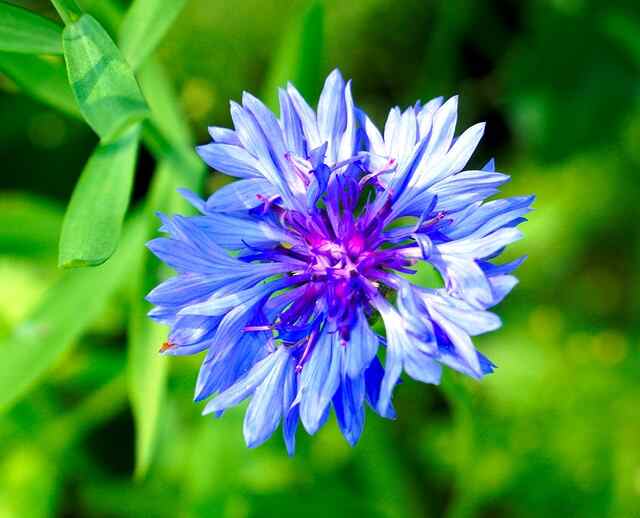
Planting Bachelor’s Button is a simple process that can be done in just a few steps:
Choose a location:
Bachelor’s Button thrives in full sun and well-drained soil, so choose a location in your garden that gets at least 6 hours of direct sunlight each day. The soil should be slightly alkaline with a pH between 6.0 and 7.5.
Prepare the soil
It’s important to prepare the soil before planting by adding organic matter such as compost or well-rotted manure to improve drainage and soil fertility. Mix the organic matter into the top 6 inches of soil using a garden fork or tiller.
Plant the seeds
Bachelor’s Button can be directly sown into the soil or started indoors 4-6 weeks before the last frost. If starting indoors, plant the seeds in biodegradable pots to prevent disturbing the delicate roots during transplantation. Plant the seeds about 1/4 inch deep and 6-12 inches apart.
Water thoroughly
Water the soil thoroughly after planting to settle the seeds and promote germination. It is suggested to water your plants deeply once a week or whenever the soil feels dry to the touch.
Thin the seedlings
Once the seedlings have grown to about 2-3 inches tall, thin them out to a distance of 6-12 inches apart to give each plant enough space to grow.
Care for the plants
Bachelor’s Button is a low-maintenance plant that does not require much care. However, to promote healthy growth, deadhead the spent flowers regularly and fertilize the plants lightly every 4-6 weeks during the growing season.
By following these simple steps, you can successfully plant Bachelor’s Button and enjoy their beautiful blooms all season long.
How do care for Bachelor’s Button?
Light
Bachelor’s Button requires full sun to thrive. The bachelor’s button needs at least 6 hours of direct sunlight per day to grow and develop properly. While it can tolerate some shade, too much shade can result in fewer blooms and weaker plants.
If you’re planting Bachelor’s Button in a garden, choose a location that gets full sun exposure throughout the day. If you’re growing them in a container, place the container in an area that gets full sun for most of the day.
In areas with very hot summers, providing some shade during the hottest part of the day may be beneficial. However, it’s important to ensure the plants still get plenty of direct sunlight during the rest of the day to promote healthy growth and blooming.
Temperature
Bachelor’s Button is a hardy plant that can tolerate a wide range of temperatures. It grows best in cool to moderate temperatures with an average daytime temperature between 60-75°F (15-24°C).
The plant can tolerate temperatures as low as 20°F (-7°C) but may require protection from frost. If you’re growing Bachelor’s Button in an area with frosty winters, it’s best to plant them after the last frost in the spring.
In areas with hot summers, Bachelor’s Button may slow down or stop blooming once temperatures exceed 85°F (29°C). To help the plants survive during hot weather, make sure they receive enough water to prevent the soil from drying out and provide some shade during the hottest part of the day.
Overall, Bachelor’s Button is a versatile plant that can adapt to different temperature conditions, but it grows best in cooler temperatures and may require some extra care during extreme heat or frost.
Soil
Bachelor’s Button thrives in well-drained soil that is slightly alkaline with a pH between 6.0 and 7.5. The soil should be loose, crumbly, and rich in organic matter to promote healthy growth.
Before planting, it’s important to prepare the soil by adding organic matter such as compost or well-rotted manure. This will improve soil fertility, drainage, and structure. Then you should mix the organic matter into the top 6 inches of soil using a garden fork or tiller.
If your soil is heavy or clay-like, consider adding sand or perlite to improve drainage. On the other hand, if your soil is too sandy, adding some organic matter can help it retain moisture.
Bachelor’s Button can tolerate some dryness, but it’s important to avoid waterlogged soil, as this can cause root rot and other issues.
By providing well-drained, slightly alkaline soil enriched with organic matter, you can help your Bachelor’s Button plants grow and thrive.
Humidity
Bachelor’s Button is a relatively low-maintenance plant when it comes to humidity requirements. It can tolerate a wide range of humidity levels, from dry to moderately humid environments.
In fact, Bachelor’s Button can thrive in arid conditions, making it a great choice for gardens in dry regions. However, it’s important to provide the plant with enough water to prevent the soil from drying out completely, especially during hot weather.
If you’re growing Bachelor’s Button indoors, it’s important to provide adequate ventilation to prevent the air from becoming stagnant and humid, which can lead to fungal growth and other issues.
Overall, Bachelor’s Button is a versatile plant that can adapt to different levels of humidity, but it’s important to ensure adequate watering and ventilation to promote healthy growth.
Water
Bachelor’s Button requires regular watering, especially during dry periods. However, it’s important to avoid over-watering the plant, as this can lead to root rot and other issues.
The frequency of watering will depend on various factors such as the weather, soil type, and the size of the plant. As a general rule, water the plant deeply once a week or whenever the top inch of soil feels dry to the touch.
It’s also important to water the plant at the base and avoid getting the leaves wet, as this can lead to fungal growth and other problems. Using a soaker hose or drip irrigation system can help deliver water directly to the roots and prevent wet foliage.
In addition to regular watering, adding a layer of mulch around the base of the plant can help retain moisture in the soil and reduce the frequency of watering.
Overall, providing adequate and consistent watering is crucial to the health and growth of Bachelor’s Button plants. However, it’s important to avoid over-watering and ensure that the water is delivered directly to the roots.
Fertilizer
Bachelor’s Button benefits from regular fertilization to promote healthy growth and abundant blooms. It’s important to provide the plant with a balanced fertilizer that contains equal amounts of nitrogen, phosphorus, and potassium.
Before planting, you can mix a slow-release fertilizer into the soil to provide long-term nutrients to the plant. Alternatively, you can apply a water-soluble fertilizer every two to three weeks during the growing season.
When fertilizing Bachelor’s Button, it’s important to follow the manufacturer’s instructions and avoid over-fertilization, as this can cause fertilizer burn and other issues. It’s also a good idea to water the plant before and after applying fertilizer to prevent burning the roots.
In addition to commercial fertilizers, you can also use organic fertilizers such as compost, manure, or fish emulsion to provide nutrients to the plant. These organic options are slower to release nutrients but are gentle and provide long-term benefits to the soil.
Overall, providing regular fertilization with a balanced fertilizer or organic options can help promote healthy growth and vibrant blooms in Bachelor’s Button plants.
How to Prune and Deadhead Bachelor’s Button?
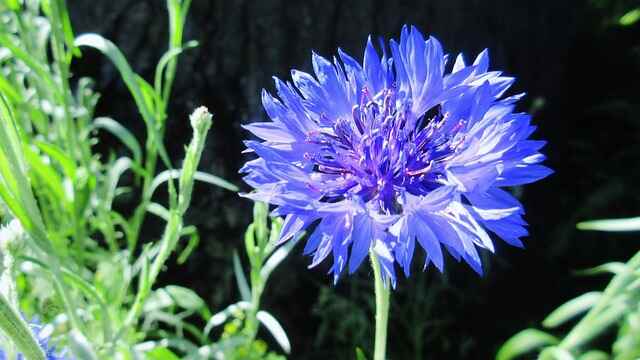
Pruning and deadheading are important tasks to keep Bachelor’s Button plants looking their best and encourage continued blooming throughout the season.
To deadhead Bachelor’s Button, simply snip off the faded blooms using sharp scissors or pruning shears. This will prevent the plant from going to seed and redirect its energy toward producing new blooms. Deadheading also helps maintain a tidy appearance and prolongs the flowering period.
If you notice any damaged or diseased foliage, prune it off using sterilized pruning shears to prevent the spread of disease. You can also trim back any straggly or leggy stems to promote a more compact and bushy growth habit.
Pruning can also be done in the fall or early spring to control the size and shape of the plant. Simply trim back the stems to about half their height to encourage new growth and prevent the plant from becoming too tall and lanky.
Overall, regular deadheading and occasional pruning can help keep Bachelor’s Button plants healthy, attractive, and blooming throughout the growing season.
Harvesting and Saving Seeds
Harvesting and saving seeds from Bachelor’s Button is a simple process that can help you propagate the plant for future seasons.
To harvest the seeds, wait until the flowers have faded and the seed heads have formed. The seed heads will be small and round, and they will turn brown as they mature. Once the seed heads have turned brown and feel dry to the touch, gently remove them from the plant using sharp scissors or pruning shears.
Next, place the seed heads in a paper bag or envelope and let them dry for several weeks. Once the seed heads are completely dry, gently crush them to release the seeds. You can also rub the seed heads between your hands to help separate the seeds from the chaff.
After separating the seeds, store them in a cool, dry place in an airtight container. Make sure to label the container with the date and variety of the seeds for future reference.
When it’s time to plant the seeds, soak them in water for a few hours before planting to help speed up germination. Sow the seeds in well-draining soil and keep them moist until they sprout. Once the plants have established themselves, you can transplant them into the garden or into larger containers.
Harvesting and saving seeds from Bachelor’s Button is a simple and rewarding process that can help you continue to enjoy the beauty of this charming plant year after year.
Common pests and diseases
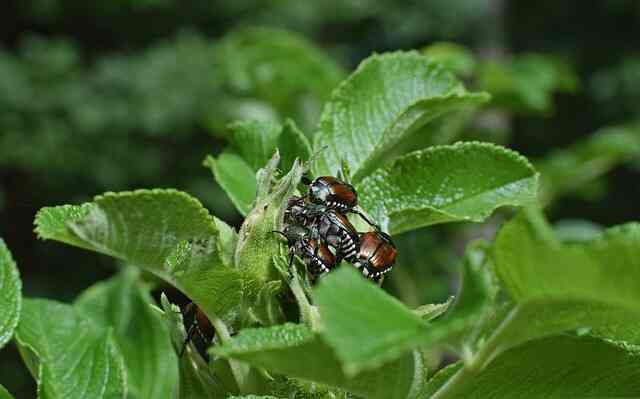
Bachelor’s Button is generally a hardy plant that is resistant to most pests and diseases. However, there are a few common issues to watch out for:
Aphids
These small, sap-sucking insects can cause stunted growth and distorted leaves. To control them, try using a strong spray of water or insecticidal soap.
Spider mites
Spider mites are tiny pests that can cause yellowing and stippling on the leaves. To control them, try using a strong spray of water or insecticidal soap.
Powdery mildew
Powdery mildew is the fungal disease that can cause a white, powdery coating on the leaves. To control it, avoid overhead watering and try using a fungicide if necessary.
Rust
This fungal disease can cause orange or brown spots on the leaves. To control it, remove any infected leaves and avoid overhead watering.
Leaf spot
Leaf spot is a fungal disease that can cause brown or black spots on the leaves. To control it, remove any infected leaves and avoid overhead watering.
To prevent these issues, make sure to plant Bachelor’s Button in well-draining soil and avoid over-watering. Keep the plants healthy with regular fertilization and remove any damaged or diseased foliage as soon as you notice it.
Conclusion
Growing and caring for Bachelor’s Button is a simple and rewarding process that can add beauty and charm to any garden or landscape. With the right amount of sunlight, water, and nutrients, this hardy plant can thrive in a variety of conditions. It’s important to pay attention to the soil quality, temperature, and humidity levels, as well as to monitor for common pests and diseases.
By following the tips and techniques outlined in this guide, you can ensure that your Bachelor’s Button plants stay healthy and vibrant. Whether you’re growing them for their striking blue or purple flowers, or for their ability to attract pollinators to your garden, these plants are sure to delight and inspire. So go ahead and give it a try, and enjoy the beauty and wonder of Bachelor’s Button for years to come.
You may also like to read

